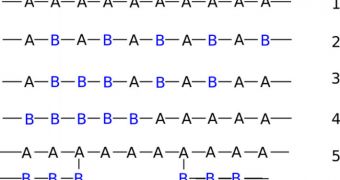Researchers have some time ago determined that it's possible to use what they call “walking polymers” to delivery drug molecules to a target cell, tissue or organ. The polymers – repetitive sequences of certain structural units – are shaped like an octopus, and they are extremely efficient at allowing for a gradual delivery of drugs. Now, group of investigators is analyzing the differences that exist between various methods of constructing polymers, as well as the results each of these “models” has in practice.
In recent investigations, it was revealed that the polymer is capable of basically “walking” on the walls of a narrow channel, provided that it is being pushed through the structure by a solvent. A new theoretical model was recently developed to compare the way in which various types and shapes of polymers would walk inside channels. The goal is to determine what shape can move best, as well as to find out methods of producing drug carriers that can release their cargo according to needs. Varying the speed with which drugs are administered is a critical step in any treatment, doctors say.
The new model considered smooth channel as the “environment,” and features both straight- and branched-chain polymers. “The deformability of particles makes them very different from atoms or hard colloids. Equilibrium studies show a huge impact on the self-organization of these molecules and we wanted to know how this aspect expresses itself when the molecules are pushed around by a flowing solvent,” says expert Arash Nikoubashman, who holds an appointment at the Heinrich Heine University, in Dusseldorf, Germany. The expert is also the author of the new model.
“At the moment we are investigating the cargo transport capabilities of dendrimers [regularly-branched polymers]. Place a guest molecule, such as a drug within a dendrimer that has affinity to specific patches on the vessel wall and let it flow with the solvent,” the expert says. Nikoubashman adds that the polymers could be constructed in such a manner that they would be able to dock to receptors, release their cargo, and then wash away with the blood. They would then be eliminated, without causing any ill-effects on the body.

 14 DAY TRIAL //
14 DAY TRIAL //